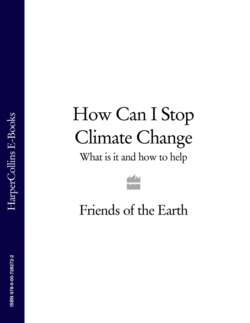Читать книгу How Can I Stop Climate Change: What is it and how to help - Литагент HarperCollins USD, F. M. L. Thompson - Страница 70
the Hadley Centre’s global climate models
ОглавлениеThe UK’s Met Office Hadley Centre is spearheading international research. Early climate models were simplistic replicas of the climate, covering temperature, rain and carbon dioxide, and were more useful for monitoring changes in the weather than for predicting future climate. Today’s models include a vast number of variables and have been shown to be capable of describing historical changes in the climate with reasonable accuracy. Interactive cloud systems, oceans, land-surface cover and aerosol pollution are all factored into the predictions made by models such as the Hadley Centre’s latest (global climate model) HadGEM1. This looks at 38 different layers of the atmosphere – allowing for greater accuracy in the predictions, and more regional detail than in older models.
Africa: Many countries are already becoming drier and this is predicted to get worse. Some 75-250 million people likely to face water shortages by 2020. Farm yields in some parts will be reduced by half by 2020. Greater risk of flooding near the Equator. Sea-level rise will affect some coastal areas by the end of the century. A quarter of Africa’s population lives in coastal areas.
Continental temperature trends
Asia: More than 1 billion people facing reduced supplies of fresh water in large river basins by mid-century. Deltas in China, India and Bangladesh at risk from rising seas. Salt water likely to contaminate the ground water. Floods may bring diseases like diarrhoea and cholera. Warming oceans will affect fish and fishing communities.
Europe: More flash floods and greater coastal erosion. In Southern Europe heat and less rainfall will be bad news for farming. Human health at risk from heat waves and smoke from wildfires. Drier summers in Central and Eastern Europe will put water supplies under stress. Forests and peat areas at risk from wildfires. In Northern Europe growing seasons likely to increase, and forest likely to flourish. Less need to heat homes but risk of more winter floods.
South America: Tropical rainforest in Eastern Amazonia likely to be dry grassland by mid-century. Species such as black spider monkeys, bearded sakis, red-handed tamarins, jaguar and pumas, will come under severe threat and some truly magnificent and significant species are likely to be lost for ever. Drier, and in some areas, saltier conditions could reduce food yields. Warmer conditions could boost soybean production in temperate areas. Vanishing glaciers will threaten water supplies in cities such as Lima, Peru, as well as hydroelectric power and farming.
North America: Farmers in northern regions could have longer growing seasons for a few decades. California may dry out and become more vulnerable to winter floods. Hotter weather and wildfires will pose health hazards. Parts of the eastern coast will see more intense hurricanes and tropical storms, storm surges and flooding.
Australia and New Zealand: Australia sees increasing water shortages by 2030 and significant loss of animal and plant varieties by 2020, particularly from the Great Barrier Reef and the Queensland Wet Tropics. Water shortages predicted for New Zealand’s North Island and rising temperatures will benefit farm yields for a time on the South Island. Risk of coastal flooding from mid-century in Australia and New Zealand.
UK climate change in the 21st century
Projected temperature increases, based on one of two IPCC scenarios – Low Emissions (+2.0°C, 525 ppm CO2 in 2080s) or High Emissions (+3.9°C, 810 ppm CO2 in 2080s)
